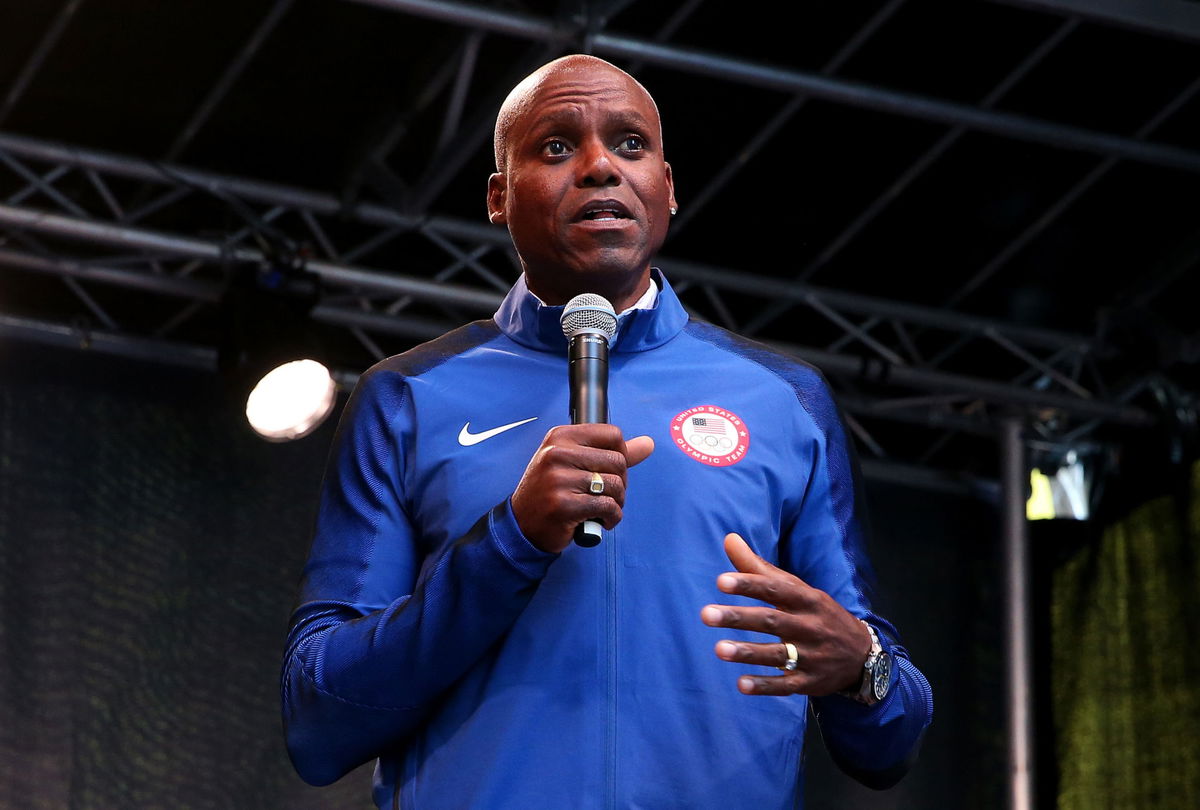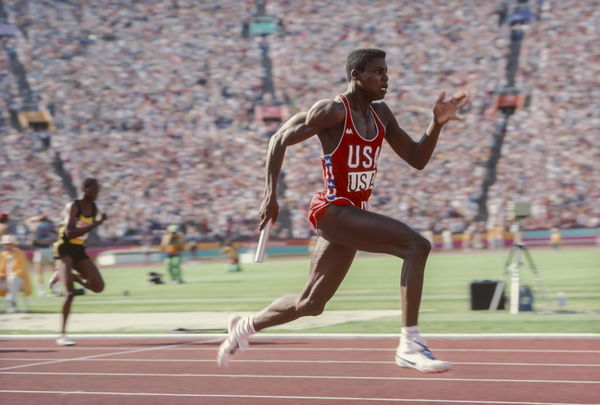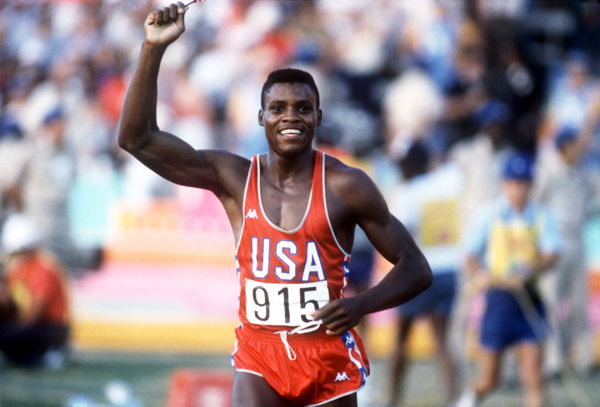
Getty
Carl Lewis once gave an ‘unforgettable’ performance of the US national anthem Image Credit: Getty

Getty
Carl Lewis once gave an ‘unforgettable’ performance of the US national anthem Image Credit: Getty
Carl Lewis was the most dominant force in athletics in the 20th century. The sprinting legend won himself 10 Olympic medals during his time on the track. Notably, 9 out of those astonishing 10 were gold medals.
Watch What’s Trending Now!
ADVERTISEMENT
Article continues below this ad
Lewis was one of the most versatile athletes in track and field history. Not only did he compete in 100m, 200m, and 400m, he was also the champion and dominator of the long jump event.
ADVERTISEMENT
Article continues below this ad
Carl Lewis had a different training routine than sprinters
Carl competed in his maiden Olympics in 1984 in Los Angeles. Despite it being his first appearance, he clinched four Olympic medals in all the four events he had entered. He shocked the world with his champion-worthy performance in 100m, 200m, 400m, and long jump.

Getty
LOS ANGELES – AUGUST 11: Carl Lewis #915 of the USA runs the anchor leg of the Men’s 4x100m relay race of the Track and Field competition of the 1984 Olympic Games held on August 11, 1984 in the Los Angeles Coliseum in Los Angeles, California. (Photo by David Madison/Getty Images)
In a recent Twitter post, Carl Lewis’s speed was compared to his greatest rival on-field, Canadian sprinter Ben Johnson. Notably, Carl tweeted back to reveal the secret of his speed. He explained how being a long jumper gave him the edge over other sprinters, as he had a different training system.
ADVERTISEMENT
Article continues below this ad

Getty
USA’s Carl Lewis celebrates winning gold (Photo by S&G/PA Images via Getty Images)
Carl said, “Just to jump in, I was a long jumper, it is often forgotten. So I trained differently than sprinters. Applying force to the ground is where it is. Lifting is the problem we’re running into now by trying to keep the feet close to the ground. Stick to the science.”
— Carl Lewis (@Carl_Lewis) September 23, 2021
What does lifting mean?
In his Twitter post, Carl had said, ” Lifting is the problem we’re running into now.” Intrigued, a Twitter user asked Carl to further explain what he meant. The Olympic legend replied to the question with a pictorial explanation.
Speed Tip Tuesday!
The correct application of force against the ground, the correct arm stroke and body position maximize takeoff distance, optimize flight distance and minimize landing distance. Stride length is a RESULT. @Carl_Lewis @AAUTrackNField pic.twitter.com/ONkTySbpJW— The Science of Speed (@PerfectMethod) June 16, 2021
Unlike Carl Lewis, very few sprinters these days can focus on over two events, let alone four. After the 1984 Los Angeles Olympics, he clinched medals at Seoul, Atlanta, Barcelona, and the Atlanta Olympics (1988-1996). The mega-quadrennial games in Atlanta in 1996 was his last Olympic appearance, as he retired in 1997.
Technology in track and field has come a long way since then. However, while Carl might not be running anymore, his words of wisdom and experiences are valuable and relevant to date.
Also read: US 100m Star Trayvon Bromell Reveals the Deep Story Behind Why He Gave a Fan His Spikes
ADVERTISEMENT
ADVERTISEMENT
ADVERTISEMENT
ADVERTISEMENT

